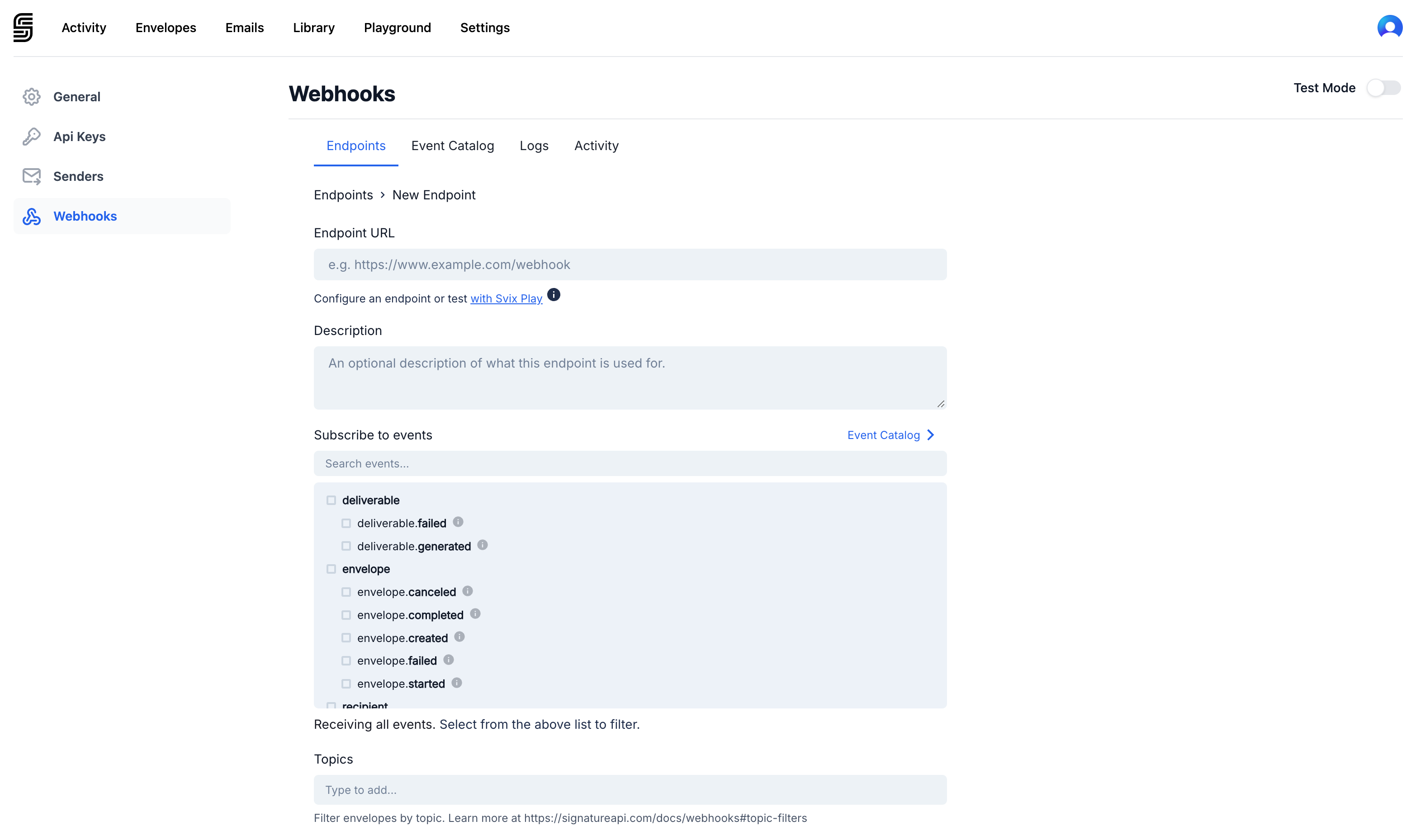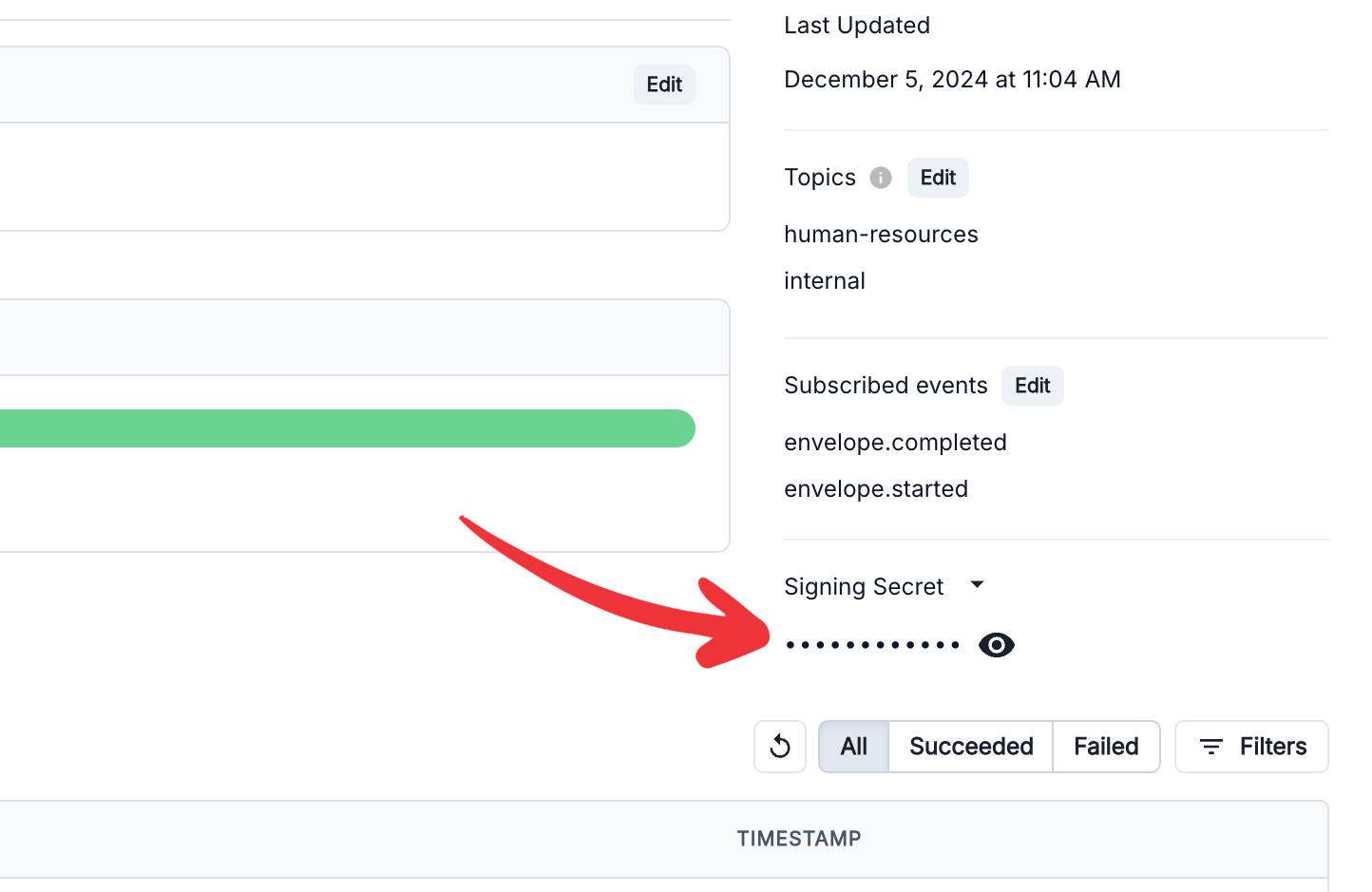Setting Up Webhooks
You can receive events by registering a webhook endpoint in the Dashboard. You can register different webhook endpoints for test or live events and select the specific events to subscribe to for each endpoint.
Events
When an event happens, SignatureAPI creates a new Event object. This is an example of an event object for arecipient.completed event:
Topic Filters
By default, SignatureAPI delivers events for all envelopes, whether in test or live mode. To receive events only for specific envelopes at a webhook endpoint, use topic filters. When creating an envelope, you can specify up to 10 topics in thetopics array of the Envelope object. Then, while setting up a webhook endpoint, list all the topics to receive events for those envelopes.
Event Delivery
SignatureAPI delivers the event via aPOST request to your webhook endpoint, with the Event object as the JSON payload.
Delivery is successful if your endpoint responds with a status code in the 2XX range (200 to 299). Any other status code means the delivery failed.
SignatureAPI does not guarantee the order of event delivery, so your endpoint should be able to handle events arriving out of order.
Retries
If your endpoint responds with a status code outside the2XX range, SignatureAPI will keep trying to deliver the event for up to 48 hours, using an exponential backoff strategy.
Authentication
Webhook notifications are secured with an HMAC signature included in thewebhook-signature header, following the Standard Webhooks specification.
You can find the Signing Secret in the right column of the webhook endpoint definition:

Source IP
If your webhook receiving endpoint is behind a firewall or NAT and you need a list of IP addresses to allow traffic, please contact support.Tools
These tools can be useful for testing webhooks:- Webhook.site: Generates a random endpoint URL and lets you inspect POST requests sent to that endpoint.
- ngrok: Sets up a tunnel from an internet-facing endpoint to your local machine, allowing you to process webhooks locally.